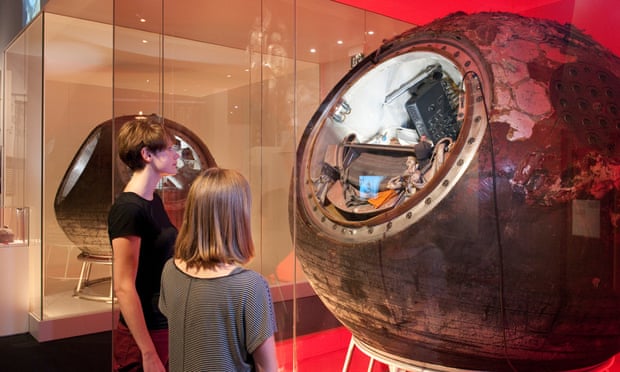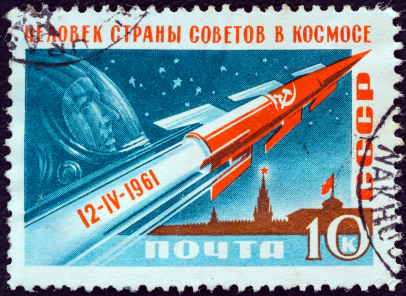I've seen the posters for the Science Museum's "Cosmonauts" exhibition almost everywhere over London, but I didn't actually look into what it was! Though the art style seemed very comic-y and I liked it, the image also clearly mimics propaganda posters and given I didn't actually know a what a "cosmonaut" was, I jumped to the conclusion that it would be a cliched exhibition about the US space race.
As it turns out, "cosmonauts" are exclusively Russian space explorers and pioneers, and the exhibition was very eye-opening in many ways. I went because a friend had a spare day in London after we'd finished a convention together, so we took the day to go and see it- her being surprised that the special exhibitions charge a sizeable entrance fee, and me being surprised that it was so interesting.
For one, the exhibition was incredibly positive and almost took no negative light on the USSR, treating it like exhibitions treat the American version of the same story: only a passing mention of the Cold War, general attitude of optimism about the ethics and direction of the Space Race and little coverage of the political context (which if I'm honest, I would have liked to see more of). It featured incredible exhibits, including the actual landing pod of Vostok 6 which flew the first woman in space, Valentina Tereshkova. I put that very lightly but I think I could have screamed when I saw it because it was so amazing.
However, the incredible feats of science were not the only thing that interested me, as the second thing that surprised me about this exhibition was how heavily art featured and how important aesthetic and design beyond just engineering. Or, as Sergei Korolev, lead engineer of Sputnik, put it, Sputnik and similar feats would one day be displayed in museums, therefore the design was important, with Korolev particularly interested in making Sputnik shiny and into a strange, unearthly shape.
I enjoyed the inclusion of Contructivist art at the start of the exhibition, as it really served a good basis as to the reasoning behind the futuristic, simplified shapes of most Russian space engineering. I think it's fantastically romantic that the engineering looked so beautiful, with many people drawing comparisons to "Doctor Who" because of the undeniable timelessness of these visions of what space tech should look like. It also reminded me of the Bauhaus, and I appreciated that the USSR, even in the midst of political turmoil and even genocide, found time to make its feats into as much about art as science and design. From an artistic perspective therefore, the tale of the cosmonauts is a far more interesting one than that of their American counterparts.
That said, one of the most interesting things I learnt was about the way the space race was presented to both the Russian people and the outside world- despite the incredible design of the original spacecraft and technology, their forms were deliberately obscured and simplified for years in propaganda art in order to keep the secret of space travel. In a way, this is sad as a world where science can be advanced without regard to politics or borders, with the pursuit of knowledge trumping war. However, I also think it highlights the key and often overlooked role illustration has played in world history, and how subtly it can be used to influence and manipulate.
Also, if you're interested in technology and particularly the recognition and progression of the female role in STEM, this episode of "The Life Scientific", where Prof. Jim al-Khalili talks to president of the IET Naomi Climer, is worth a listen!




No comments:
Post a Comment